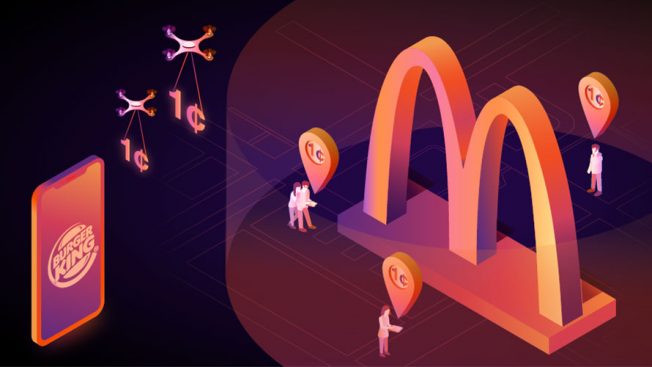Inspiration meets innovation at Brandweek, the ultimate marketing experience. Join industry luminaries, rising talent and strategic experts in Phoenix, Arizona this September 23–26 to assess challenges, develop solutions and create new pathways for growth. Register early to save.
History has given us many storied accounts of competition: Coca-Cola versus Pepsi; Apple versus Microsoft; Marvel versus DC; Starbucks versus Dunkin.
The ferocity of rivalry competition has propelled entire industries and the economy forward as the underdog is forced to innovate to get ahead. There’s only one number one, while the remaining 99.9 percent of companies aggressively attempt to stay top-of-mind with their current customers and try to acquire new ones. This means brands protectively pay a premium across multiple marketing channels for future security. Brands protect things like securing shelf space, retail locations with prime foot traffic or optimizing bids to secure a top-ranked ad placement.
But now, there’s a new threat to brand momentum: The physical air around your brand. The air around that premium shelf or that prime real estate. No longer is air a benign, life-giving entity.
Take McDonald’s, one of the largest real estate companies in the world, who recently saw one of their assets become a top threat overnight. Burger King leveraged an audience targeting capability to identify individuals within a certain area in order to run a campaign. How did they take things one step further? They weaponized McDonald’s assets to their advantage.
Some digital targeting allows for an ability to create a custom perimeter around a certain area, like a retail storefront. In McDonald’s case, this was done by using physical McDonald’s locations. When an audience member (with location services enabled) enters or exits the perimeter, an action is triggered, often in the form of a notification.
Burger King established a 600-foot perimeter around McDonald’s properties and triggered a coupon for a one cent Whopper and directions to the nearest location. Ultimately, they used McDonald’s real estate asset against them. This is the concept of geo-conquesting, or the act of overtaking a competitor’s location. The underdog “innovated” to get ahead.
The technology to make this happen, however, has been around for several years. Similar incidents have happened on a smaller scale where, for instance, a hotel brand targeted travelers in front of competitor ads with an offer for an evening stay. In another case, a shoe store targeted customers entering a competitor’s store with a gamified coupon. In both cases, the PR attention was minimal. The use of this technology by a well-known brand sets a precedence of behavior that will likely accelerate the use of this targeting.
The era of geo-conquesting has arrived. Brands need to watch the air around them. Unfortunately, there’s no such thing as marketing digital air rights the way there is with buildings that helps protect the air around your retail space or shelf space from digital messages. Even if there were, in the case of Burger King, the ad was served through Burger King’s own app, which is something McDonald’s has no ability to influence. The actual competitive geotargeting capability is an ethical gray area, a choice for each brand to consider case by case.
Brands need to evaluate whether or not they should employ the tactic and if the tactic upholds the brand’s values. Whatever your stance on the targeting strategy, the good news is there are couple of proactive actions brands can take to strengthen the protection against geo-conquesting threats.
First, ensure your brand identifies key markets and incorporates a location-specific branded and non-branded search strategy for mobile devices. Customers within close proximity searching for relevant terms indicate lower-funnel interest marketers often overlook. A report from L2 identified this as an effective growth tactic in the Asian beauty industry to attract business from foreign travelers.
Second, consider what it says about a brand experience when a competing effort sees 20 times more redemptions than past app promotions, as is the case of Burger King’s promotion against McDonald’s. The customers Burger King is attracting away from McDonald’s are price and deal-driven customers, just as the shoppers who seek out Amazon over alternatives. They’re not loyal to either brand because of an experience or feeling the brand gives, but are driven by the deal-of-the-day.
Analyzing companies who are winning against Amazon can also teach us a lesson in how to stand strong in the era of geo-conquesting. Investing in a unique experience matters.
Retailers or CPG manufacturers may not be the only industries impacted by a mainstream adoption of geo-conquesting techniques. The hospitality and healthcare spaces could experience a future where publicly accessible reviews are surfaced to customers upon entry into a perimeter, which deter potential customers. No matter what the industry, customer experience matters.








